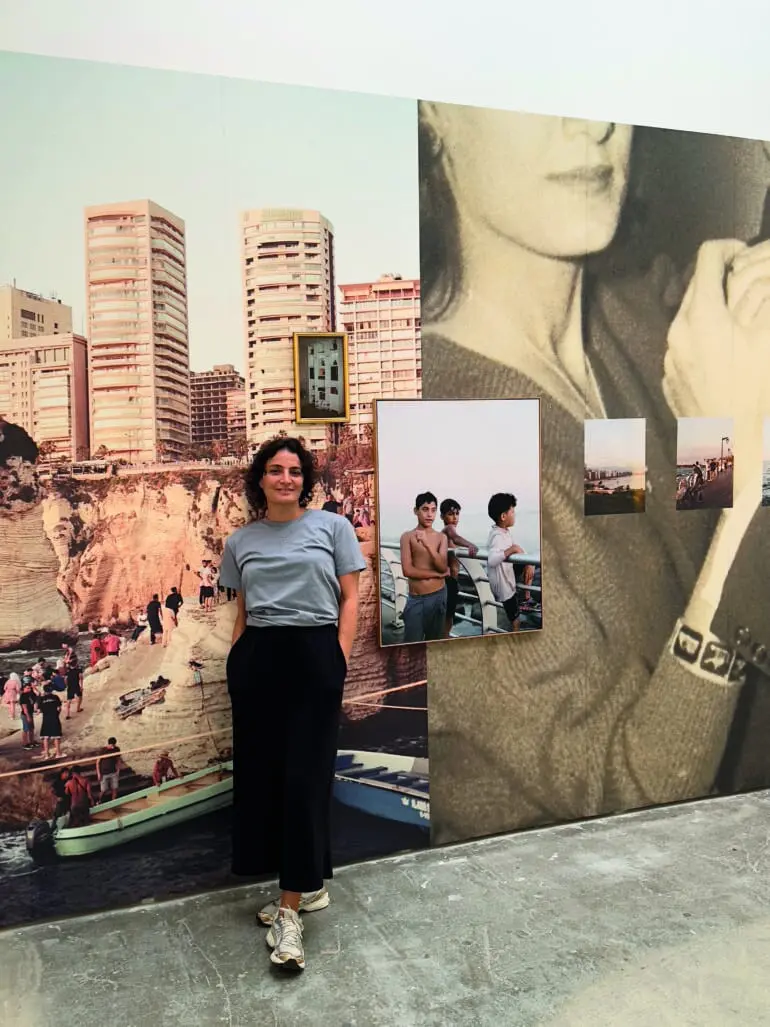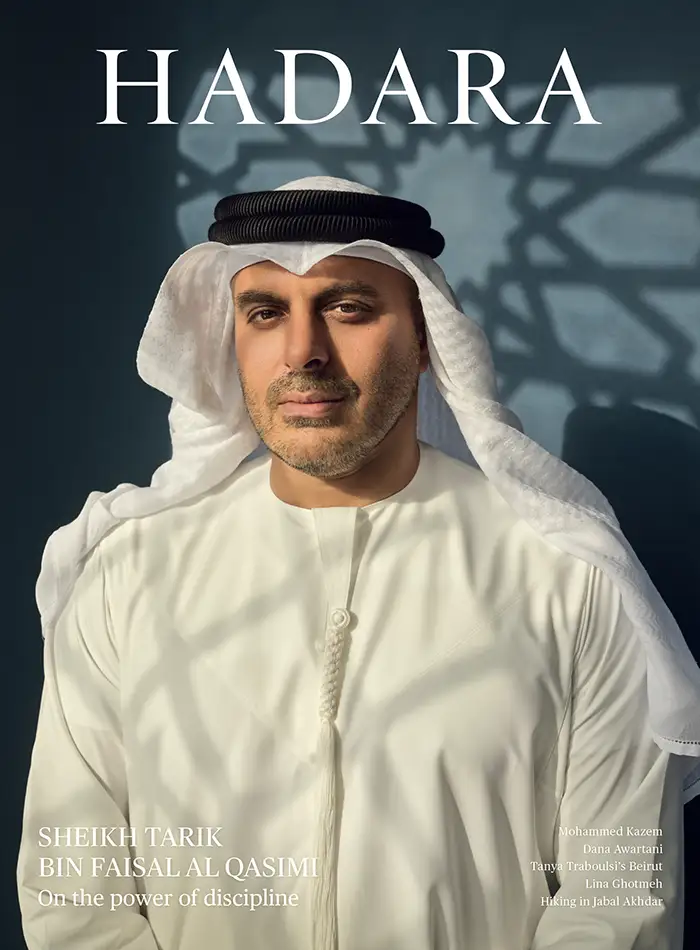An archive of feelings
Tanya Traboulsi captures on film the essence of Beirut and her own family memories.
By Naima Morelli
Photos by Tanya Traboulsi
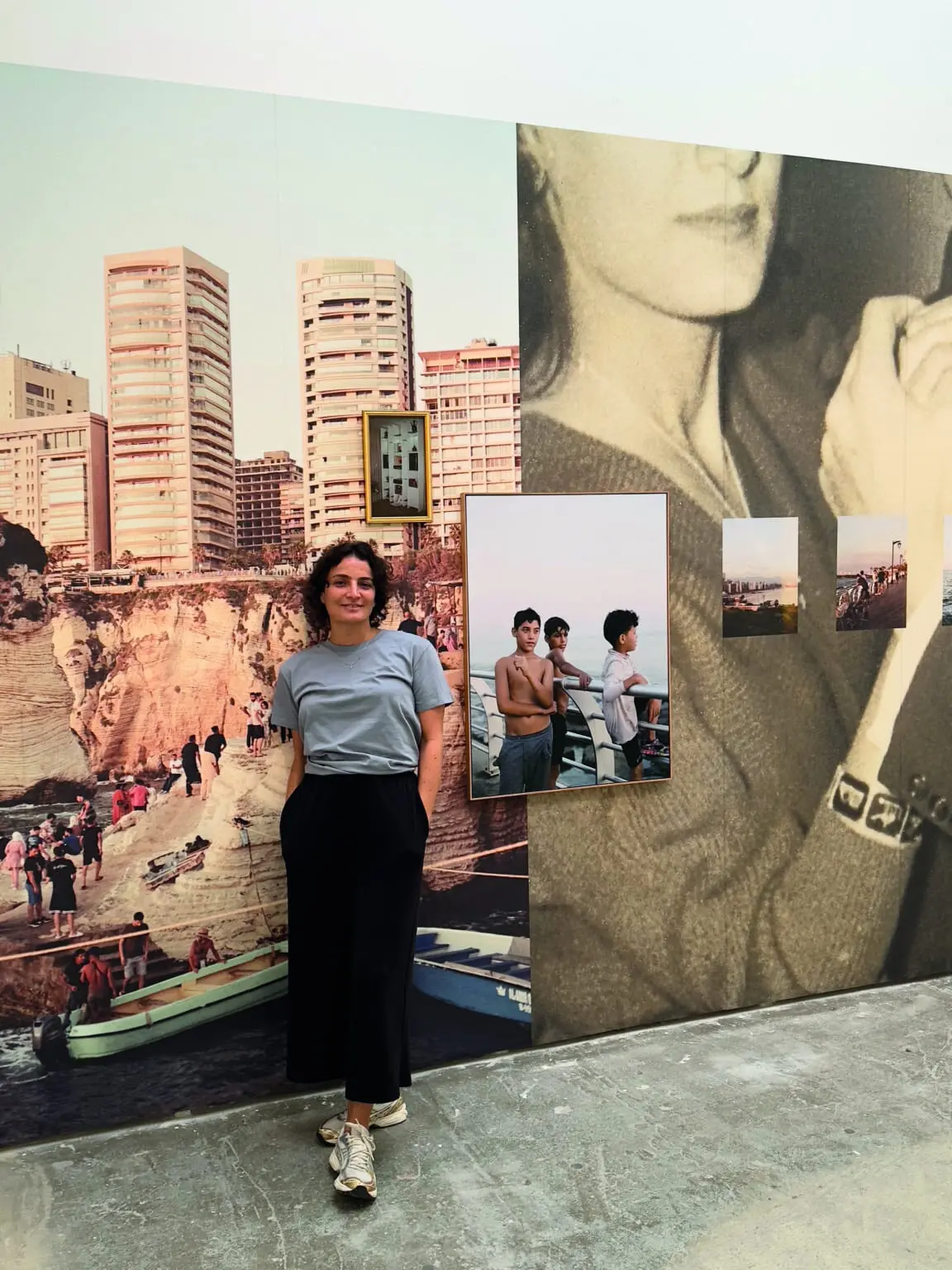
“Orange blossom, jasmine, gardenia, and burning garbage. These smells defined my childhood in Beirut,” says photographer Tanya Traboulsi. Perhaps no one has done such a sensory somersault to describe the Lebanese capital, translating memory into images.
Themes of memory, belonging, and identity are recurring motifs in Traboulsi’s work. Born in 1976, a year after the start of Lebanon’s civil war, her family fled the country in 1983 to the safety of Austria, her mother’s home country. But a longing for Lebanon remained. “When my family left Beirut, we left by ferry. I watched the city slowly disappear, a thin stretch of buildings retreating on the horizon getting farther and farther across the sea.” That image stayed with her for 13 years, inspiring the title of her photo series, Beirut, Recurring Dream. “Years later, I took that photo. It’s in my book,” she says. “It was exactly how I remembered it.”
In her images, which are often bathed in a golden light, groups of boys are ready to jump off a cliff into the Mediterranean Sea, an old woman’s wrinkled hand reaches for a cup of coffee, an empty plastic chair is lit by the slant of the afternoon sun. Each image holds a sweetness, a quietness, an eerie stillness that appears to invite the viewer into a dreamscape.
Stillness isn’t normally associated with Beirut. Yet Traboulsi reminds us that despite the city’s tumultuous past, Beirut’s beauty is intertwined with feelings of nostalgia. Her images show the kind of homeland you might dream about as an adolescent when you are far away, tucked in bed in Austria, for example. “Rather than an archive of images, I love to call my work an archive of feelings.”
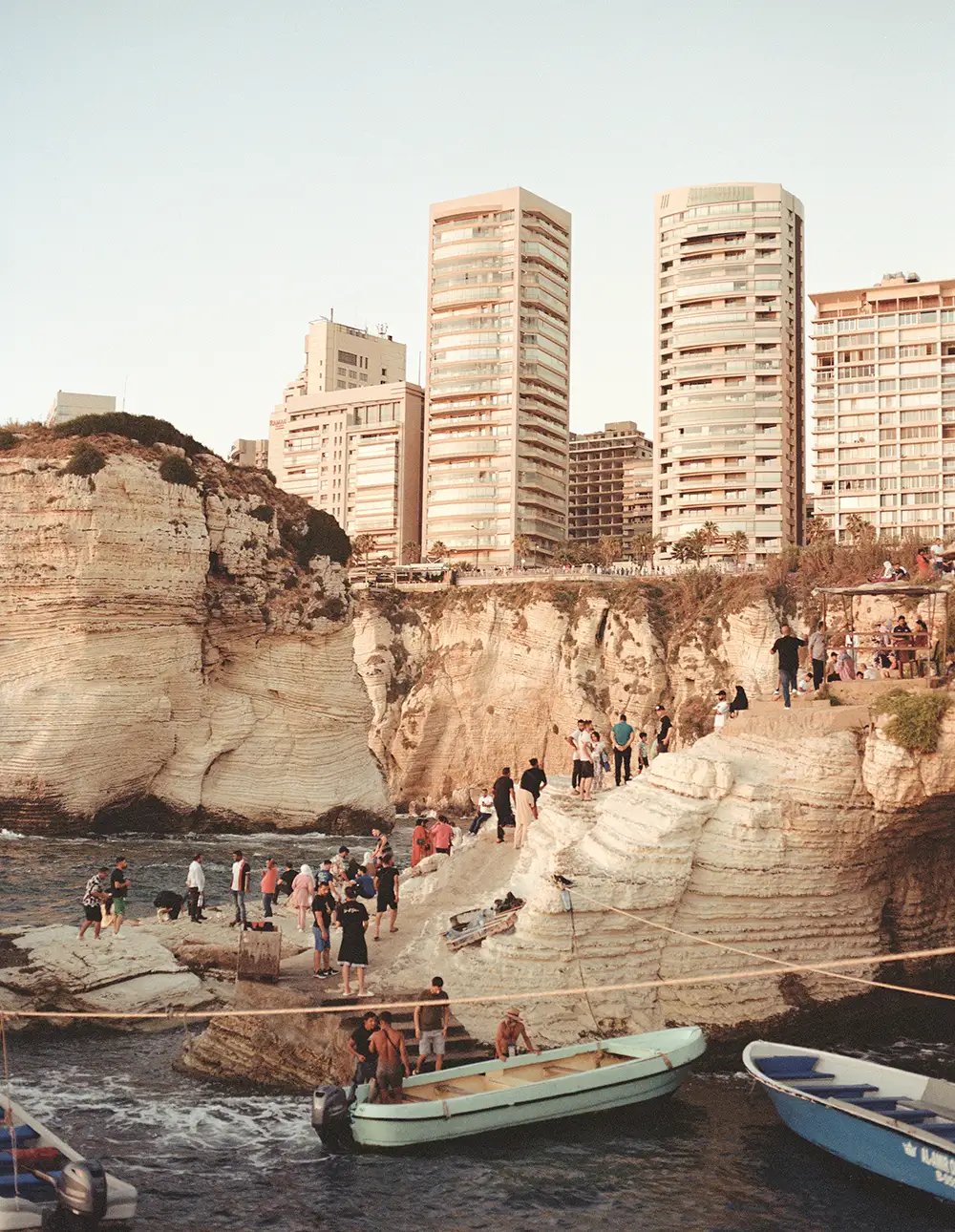
The ongoing series Beirut, Recurring Dream walks the line between autobiography and documentary. In her photos, Beirut is not only a backdrop, but a character.
For Beirut, Recurring Dream, an ongoing photographic series that began in 2021, Traboulsi cropped vintage pictures from her family archive and paired them with her own photos. This integration of past and present, intuitively combined, reveals a multi-generational story. Not of grand narratives, but the folds of reality. Small, domestic truths that feel like a form of homecoming.
The cropping of the old images is symbolic: “For me, memories are cropped moments,” she says. “I don’t write captions under my images. I want to leave space for the viewer to tell their own story.”
Her connection to photography was seeded early. “My mother, my grandmother, and my great-grandmother photographed. The medium was always present at home,” she recalls. At four, she received her first camera, a now-defunct 110 model, though she has lost her first snaps. What remains is a Super 8 clip of the moment she received it, immortalising a young girl inspecting the camera, unsure yet already mesmerised.
Photography, she says, was always her primary language, even before she considered it an art form, let alone work. In high school in Austria she studied fine arts, sculpture, painting, and art history, but never photography. Later, she began to understand the medium differently.
Her early projects traversed forms, from self-portraits to documenting Lebanon’s subcultures to social themes. Over seven years, she chronicled Lebanon’s underground music scene and eventually published a book. Yet at the time, she still felt a disconnect, she says. “Sometimes I thought I found my path, my language. But looking back, I hadn’t.”
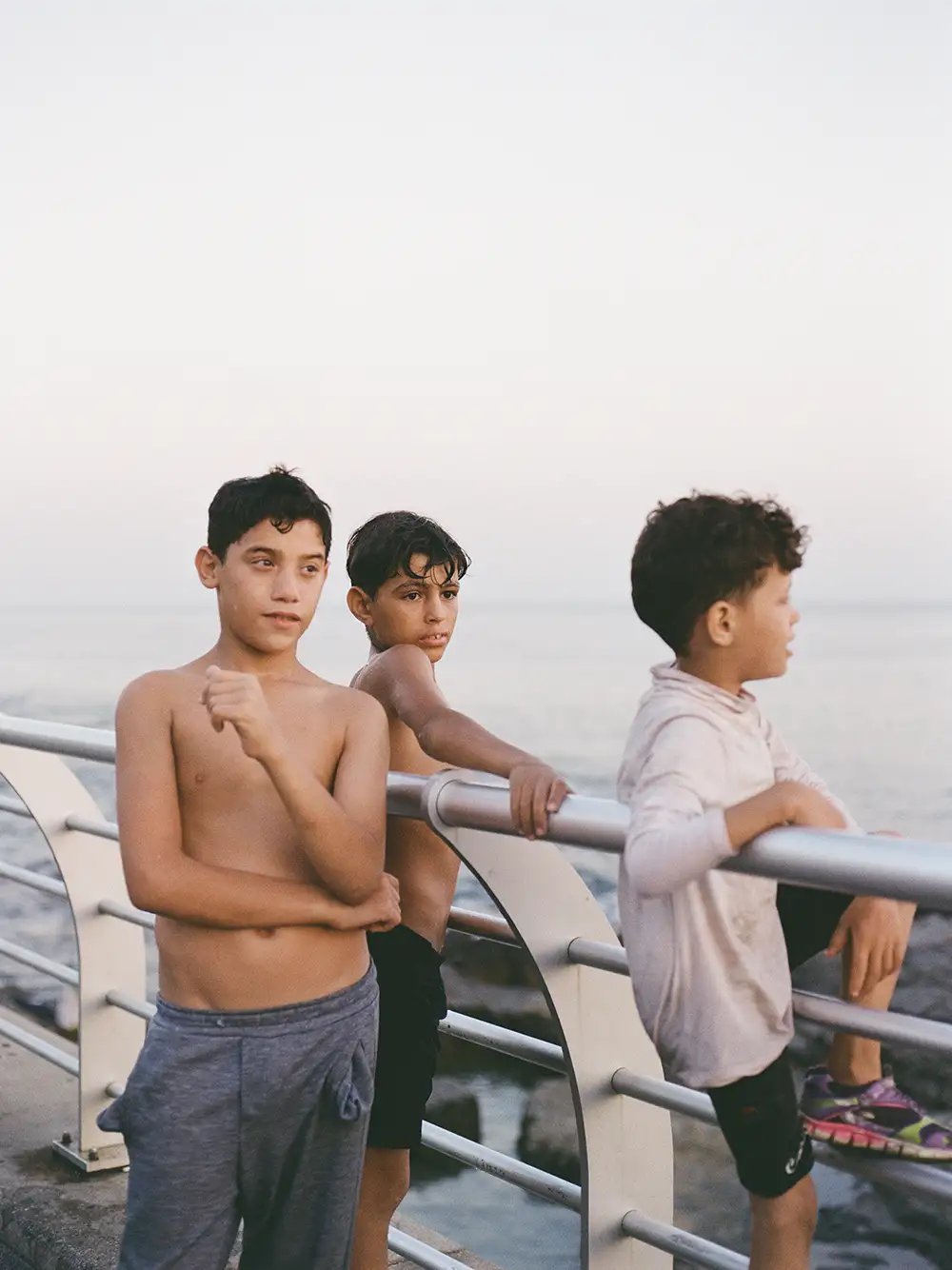

The sincerity in her photos reflects that Traboulsi speaks to everyone she photographs. Her images are never stolen moments, but rather collaborative gestures. The visual poetics of her Beirut lie in subtlety. Her photographs recount everyday moments.
The turn towards her series Beirut, Recurring Dream was catalysed by the compound crises of 2019-2020, which include the financial collapse and the devastating port explosion. In these ruptures, Traboulsi found clarity. She began walking the city, observing its surfaces, inhabitants, and absences, always with her camera, a medium-format Pentax. “I go with the flow,” she says. “Sometimes I go out and don’t take a single photo. Sometimes I shoot five rolls in an afternoon.”
Choosing to shoot on film and develop her own work anchors her to the materiality of the image. “It feels like you create everything on your own, without external forces or influence,” Traboulsi says. “I enjoy being in the darkroom, hanging the pictures to dry. I even like to wait the time it takes to develop.”
Her book devoted to Beirut, A Sea Apart, published in November 2024, was born from this personal archive. A notebook of recollections, the visual poetics of her Beirut lie in subtlety. The photographs recount everyday moments and resilience, from a tangle of laundry lines to sea-worn concrete to adolescents fooling around by the corniche. The sincerity in her photos reflects that she speaks to everyone she photographs and that she is part of the community. Her images are never stolen moments, but rather collaborative gestures: “When someone says no, I walk away. It’s about respect.”
People often find her. “Especially the boys,” she says. “They run up and ask to be photographed. They’re proud to be depicted.” When photographing children without phones, she promises to bring them the prints. “In one case, I couldn’t find them in the same spot. The photos are still in my car.”
Her camera is often pointed towards beaches and public spaces near the sea, which hold particular resonance in Lebanon. The beaches of Ramlet al-Baida and Dalieh are dear to her, being among the last public access points to the sea in Beirut. With much of the coastline under private development, these remaining public spaces are vital community lifelines.
In an era of ubiquitous phone photography, working with film forces Traboulsi to take a minimalist approach. When she scouts images around the city, she does a first edit in her mind. “When you only have 16 frames, you don’t waste them. You slow down. You really look.”
Having shot Beirut since the ‘90s, she recognises that the city has changed, as has her way of looking at it. Her early images, shot upon her return in 1995, are taken from cars, from a distance, while today she gets up close to her subjects. “We keep constantly reinventing ourselves in Lebanon,” she concludes.


